-
 Bitcoin
Bitcoin $84,993.8786
0.34% -
 Ethereum
Ethereum $1,599.9353
1.27% -
 Tether USDt
Tether USDt $0.9999
-0.01% -
 XRP
XRP $2.0813
0.78% -
 BNB
BNB $592.4105
0.82% -
 Solana
Solana $138.1937
3.17% -
 USDC
USDC $1.0000
0.00% -
 Dogecoin
Dogecoin $0.1589
2.71% -
 TRON
TRON $0.2413
-1.55% -
 Cardano
Cardano $0.6307
2.60% -
 UNUS SED LEO
UNUS SED LEO $9.3881
1.71% -
 Chainlink
Chainlink $12.8366
1.65% -
 Avalanche
Avalanche $19.2740
1.26% -
 Stellar
Stellar $0.2445
1.24% -
 Toncoin
Toncoin $2.9868
-0.07% -
 Shiba Inu
Shiba Inu $0.0...01221
3.10% -
 Hedera
Hedera $0.1669
0.87% -
 Sui
Sui $2.1351
1.39% -
 Bitcoin Cash
Bitcoin Cash $336.8750
2.70% -
 Hyperliquid
Hyperliquid $18.0804
6.57% -
 Polkadot
Polkadot $3.7246
1.15% -
 Litecoin
Litecoin $76.4144
1.52% -
 Dai
Dai $0.9999
0.00% -
 Bitget Token
Bitget Token $4.4597
2.23% -
 Ethena USDe
Ethena USDe $0.9992
0.00% -
 Pi
Pi $0.6437
5.71% -
 Monero
Monero $212.9449
-1.50% -
 Uniswap
Uniswap $5.2448
1.29% -
 Pepe
Pepe $0.0...07289
2.88% -
 OKB
OKB $50.8316
2.01%
How to calculate Bitfinex's contract funding rate?
To calculate Bitfinex's funding rate, use the formula F = p clamp(r - p, -1 * clampCap, clampCap), where p is the Premium Index, r is the Interest Rate, and clampCap limits extreme values.
Apr 16, 2025 at 12:49 am

Understanding how to calculate Bitfinex's contract funding rate is crucial for traders engaging in perpetual futures contracts on this platform. The funding rate is a mechanism designed to keep the price of perpetual futures in line with the spot price of the underlying asset. This article will guide you through the process of calculating the funding rate on Bitfinex, explaining each component involved and providing a practical example.
What is the Funding Rate?
The funding rate is a periodic payment made between traders holding long and short positions in perpetual futures contracts. It helps to ensure that the futures price does not deviate significantly from the spot price. If the funding rate is positive, long position holders pay short position holders, and if it's negative, short position holders pay long position holders.
Components of the Funding Rate
To calculate the funding rate on Bitfinex, you need to understand its three main components:
- Interest Rate (r): This is the average of the borrowing rates for the base and quote currencies. Bitfinex uses a proprietary formula to determine this rate.
- Premium Index (p): This is calculated as the difference between the perpetual futures contract price and the spot price, averaged over a specific time period.
- Clamp Function: This function limits the funding rate to prevent extreme values. The clamp function ensures that the funding rate does not exceed a certain range.
Formula for the Funding Rate
The funding rate (F) on Bitfinex is calculated using the following formula:
[ F = p + clamp(r - p, -1 * clampCap, clampCap) ]
Where:
- p is the Premium Index.
- r is the Interest Rate.
- clampCap is the maximum value that the clamp function can return, which is set by Bitfinex.
Calculating the Premium Index
The Premium Index (p) is calculated as the time-weighted average difference between the perpetual futures contract price and the spot price over a specific period. Bitfinex typically uses a 1-hour interval to calculate this average. The formula for the Premium Index is:
[ p = \frac{1}{n} \sum_{i=1}^{n} (IndexPrice_i - MarkPrice_i) ]
Where:
- n is the number of data points in the time interval.
- IndexPrice_i is the spot price at time i.
- MarkPrice_i is the perpetual futures contract price at time i.
Calculating the Interest Rate
The Interest Rate (r) is calculated as the average of the borrowing rates for the base and quote currencies. Bitfinex uses a proprietary formula to determine these rates, which are influenced by market conditions and liquidity. For example, if the base currency is Bitcoin (BTC) and the quote currency is US Dollar (USD), the interest rate would be:
[ r = \frac{BorrowRate{BTC} + BorrowRate{USD}}{2} ]
Applying the Clamp Function
The clamp function is used to limit the funding rate to prevent extreme values. The clamp function is defined as:
[ clamp(x, min, max) = \begin{cases}
min & \text{if } x < min \
x & \text{if } min \leq x \leq max \
max & \text{if } x > max
\end{cases} ]
On Bitfinex, the clampCap is typically set to 0.05%, meaning the funding rate can range from -0.05% to 0.05%.
Practical Example of Calculating the Funding Rate
Let's walk through a practical example to understand how to calculate the funding rate on Bitfinex.
- Premium Index (p): Suppose over the last hour, the average difference between the perpetual futures contract price and the spot price is 0.02%.
- Interest Rate (r): Assume the average borrowing rate for BTC and USD is 0.03%.
- ClampCap: The clampCap is set to 0.05%.
Using the funding rate formula:
[ F = p + clamp(r - p, -1 * clampCap, clampCap) ]
[ F = 0.02\% + clamp(0.03\% - 0.02\%, -0.05\%, 0.05\%) ]
[ F = 0.02\% + clamp(0.01\%, -0.05\%, 0.05\%) ]
[ F = 0.02\% + 0.01\% ]
[ F = 0.03\% ]
In this example, the funding rate is 0.03%, meaning long position holders will pay short position holders 0.03% of their position value.
Steps to Calculate the Funding Rate on Bitfinex
To calculate the funding rate on Bitfinex, follow these steps:
Determine the Premium Index:
- Collect the spot price and perpetual futures contract price data for the last hour.
- Calculate the time-weighted average difference between these prices.
Determine the Interest Rate:
- Obtain the borrowing rates for the base and quote currencies.
- Calculate the average of these rates.
Apply the Clamp Function:
- Calculate the difference between the interest rate and the premium index.
- Use the clamp function to limit this difference within the clampCap range.
Calculate the Funding Rate:
- Add the premium index to the result of the clamp function.
Frequently Asked Questions
Q1: How often is the funding rate calculated on Bitfinex?
The funding rate on Bitfinex is calculated and applied every 8 hours. This ensures that the perpetual futures contract price remains closely aligned with the spot price.
Q2: Can the funding rate on Bitfinex be negative?
Yes, the funding rate can be negative. If the premium index is negative and the clamp function results in a negative value, the funding rate will be negative, meaning short position holders will pay long position holders.
Q3: What happens if the funding rate exceeds the clampCap?
The clamp function ensures that the funding rate does not exceed the clampCap. If the calculated funding rate would be outside this range, it is adjusted to the maximum or minimum value allowed by the clampCap.
Q4: How does the funding rate affect my trading on Bitfinex?
The funding rate directly impacts the profitability of your trades. If you hold a long position and the funding rate is positive, you will pay the funding rate to short position holders, which can reduce your profits or increase your losses. Conversely, if you hold a short position and the funding rate is positive, you will receive payments from long position holders, potentially increasing your profits or reducing your losses.
Disclaimer:info@kdj.com
The information provided is not trading advice. kdj.com does not assume any responsibility for any investments made based on the information provided in this article. Cryptocurrencies are highly volatile and it is highly recommended that you invest with caution after thorough research!
If you believe that the content used on this website infringes your copyright, please contact us immediately (info@kdj.com) and we will delete it promptly.
- Codename:Pepe dips 30% from March highs, sparking investor interest in Codename:Pepe's AI-powered alternative.
- 2025-04-19 14:20:14
- Despite Its Elevated Position as the World's Premier Meme Coin, Dogecoin (DOGE) Has Been Struggling
- 2025-04-19 14:20:13
- Market Update: Crypto Market Remains Steady at $2.79 Trillion with Minimal 0.14% Growth
- 2025-04-19 14:15:13
- Can Mantra (OM) Bounce Back? How High Can the Price Go After 90% Crash?
- 2025-04-19 14:15:13
- President Donald Trump Said at a 2024 Campaign Event That He Wanted All Remaining Bitcoin
- 2025-04-19 14:10:13
- Qubetics ($TICS): The New Frontier in Blockchain Interoperability
- 2025-04-19 14:10:13
Related knowledge
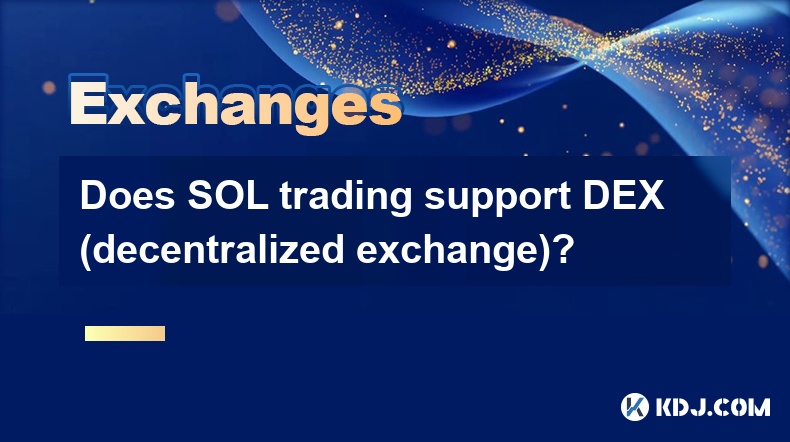
Does SOL trading support DEX (decentralized exchange)?
Apr 19,2025 at 05:21am
Solana (SOL), a high-performance blockchain platform, has gained significant attention in the cryptocurrency community for its fast transaction speeds and low fees. One of the key aspects that traders and investors often inquire about is whether SOL trading supports decentralized exchanges (DEXs). In this article, we will explore this topic in detail, p...
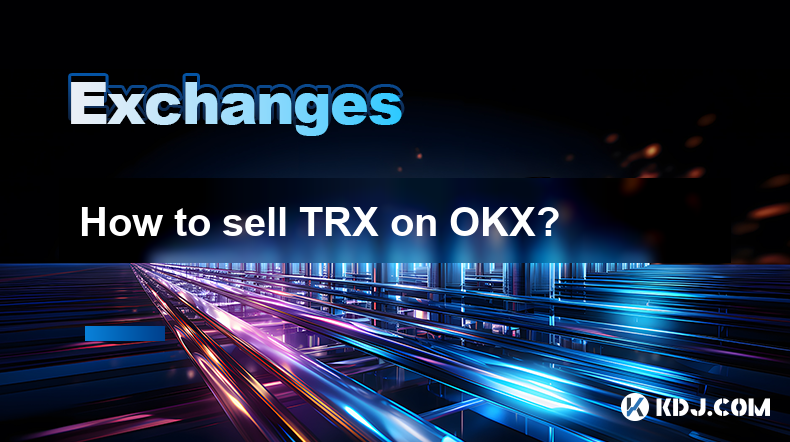
How to sell TRX on OKX?
Apr 18,2025 at 11:07pm
Selling TRX on OKX is a straightforward process that can be completed in a few simple steps. This article will guide you through the entire process, ensuring that you understand each step thoroughly. Whether you are a beginner or an experienced trader, this guide will help you navigate the OKX platform with ease. Preparing to Sell TRX on OKXBefore you c...
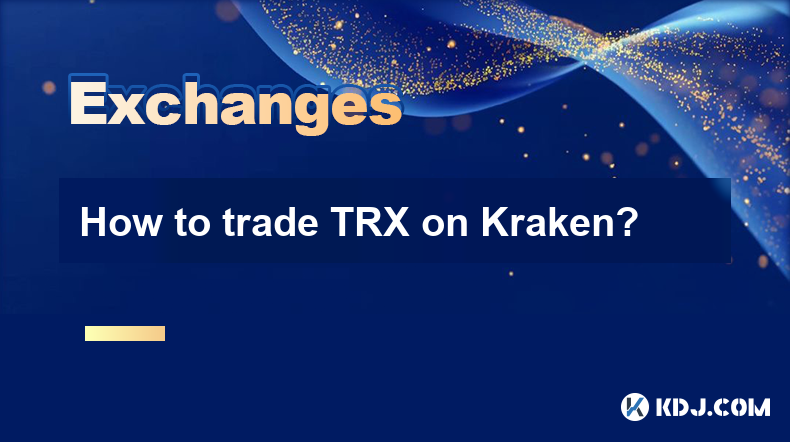
How to trade TRX on Kraken?
Apr 19,2025 at 02:00am
Trading TRX on Kraken involves several steps, from setting up your account to executing your first trade. Here's a detailed guide on how to get started and successfully trade TRX on the Kraken platform. Setting Up Your Kraken AccountBefore you can start trading TRX on Kraken, you need to set up an account. Here's how to do it: Visit the Kraken website a...
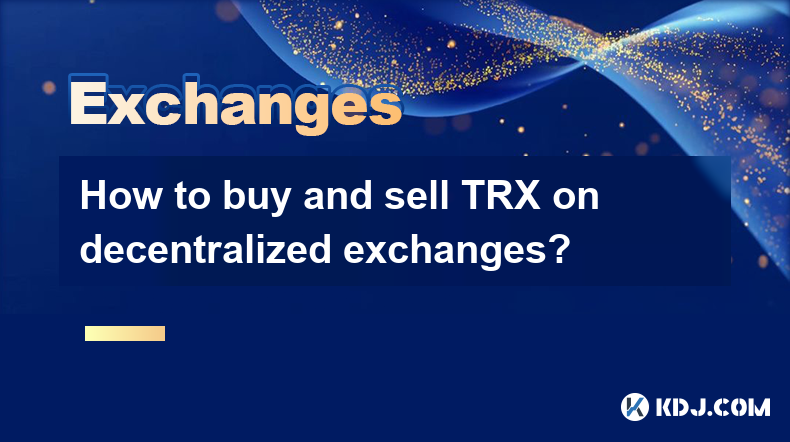
How to buy and sell TRX on decentralized exchanges?
Apr 18,2025 at 08:08pm
Introduction to TRX and Decentralized ExchangesTRX, or Tron, is a popular cryptocurrency that aims to build a decentralized internet and entertainment ecosystem. Decentralized exchanges (DEXs) offer a way to trade cryptocurrencies like TRX without the need for a central authority, providing greater privacy and control over your funds. In this article, w...
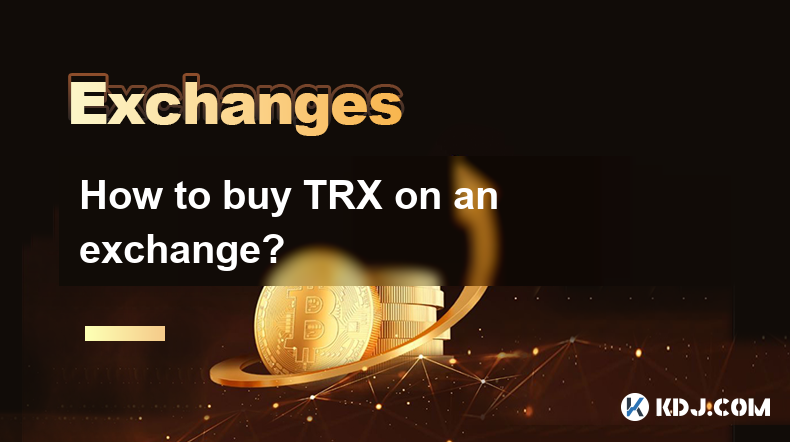
How to buy TRX on an exchange?
Apr 19,2025 at 12:08pm
Buying TRX, the native cryptocurrency of the Tron network, on an exchange is a straightforward process that involves several key steps. This guide will walk you through the process of purchasing TRX, ensuring you understand each step thoroughly. Choosing a Reliable ExchangeBefore you can buy TRX, you need to select a reputable cryptocurrency exchange th...
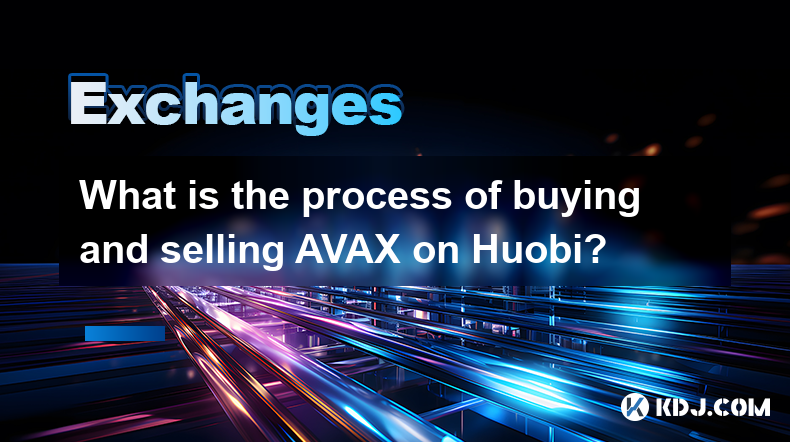
What is the process of buying and selling AVAX on Huobi?
Apr 18,2025 at 07:50pm
Understanding AVAX and Huobi Before diving into the process of buying and selling AVAX on Huobi, it's essential to understand what these terms mean. AVAX is the native cryptocurrency of the Avalanche blockchain, a platform designed for decentralized applications and custom blockchain networks. Huobi, on the other hand, is a leading global cryptocurrency...

Does SOL trading support DEX (decentralized exchange)?
Apr 19,2025 at 05:21am
Solana (SOL), a high-performance blockchain platform, has gained significant attention in the cryptocurrency community for its fast transaction speeds and low fees. One of the key aspects that traders and investors often inquire about is whether SOL trading supports decentralized exchanges (DEXs). In this article, we will explore this topic in detail, p...

How to sell TRX on OKX?
Apr 18,2025 at 11:07pm
Selling TRX on OKX is a straightforward process that can be completed in a few simple steps. This article will guide you through the entire process, ensuring that you understand each step thoroughly. Whether you are a beginner or an experienced trader, this guide will help you navigate the OKX platform with ease. Preparing to Sell TRX on OKXBefore you c...

How to trade TRX on Kraken?
Apr 19,2025 at 02:00am
Trading TRX on Kraken involves several steps, from setting up your account to executing your first trade. Here's a detailed guide on how to get started and successfully trade TRX on the Kraken platform. Setting Up Your Kraken AccountBefore you can start trading TRX on Kraken, you need to set up an account. Here's how to do it: Visit the Kraken website a...

How to buy and sell TRX on decentralized exchanges?
Apr 18,2025 at 08:08pm
Introduction to TRX and Decentralized ExchangesTRX, or Tron, is a popular cryptocurrency that aims to build a decentralized internet and entertainment ecosystem. Decentralized exchanges (DEXs) offer a way to trade cryptocurrencies like TRX without the need for a central authority, providing greater privacy and control over your funds. In this article, w...

How to buy TRX on an exchange?
Apr 19,2025 at 12:08pm
Buying TRX, the native cryptocurrency of the Tron network, on an exchange is a straightforward process that involves several key steps. This guide will walk you through the process of purchasing TRX, ensuring you understand each step thoroughly. Choosing a Reliable ExchangeBefore you can buy TRX, you need to select a reputable cryptocurrency exchange th...

What is the process of buying and selling AVAX on Huobi?
Apr 18,2025 at 07:50pm
Understanding AVAX and Huobi Before diving into the process of buying and selling AVAX on Huobi, it's essential to understand what these terms mean. AVAX is the native cryptocurrency of the Avalanche blockchain, a platform designed for decentralized applications and custom blockchain networks. Huobi, on the other hand, is a leading global cryptocurrency...
See all articles
























































































